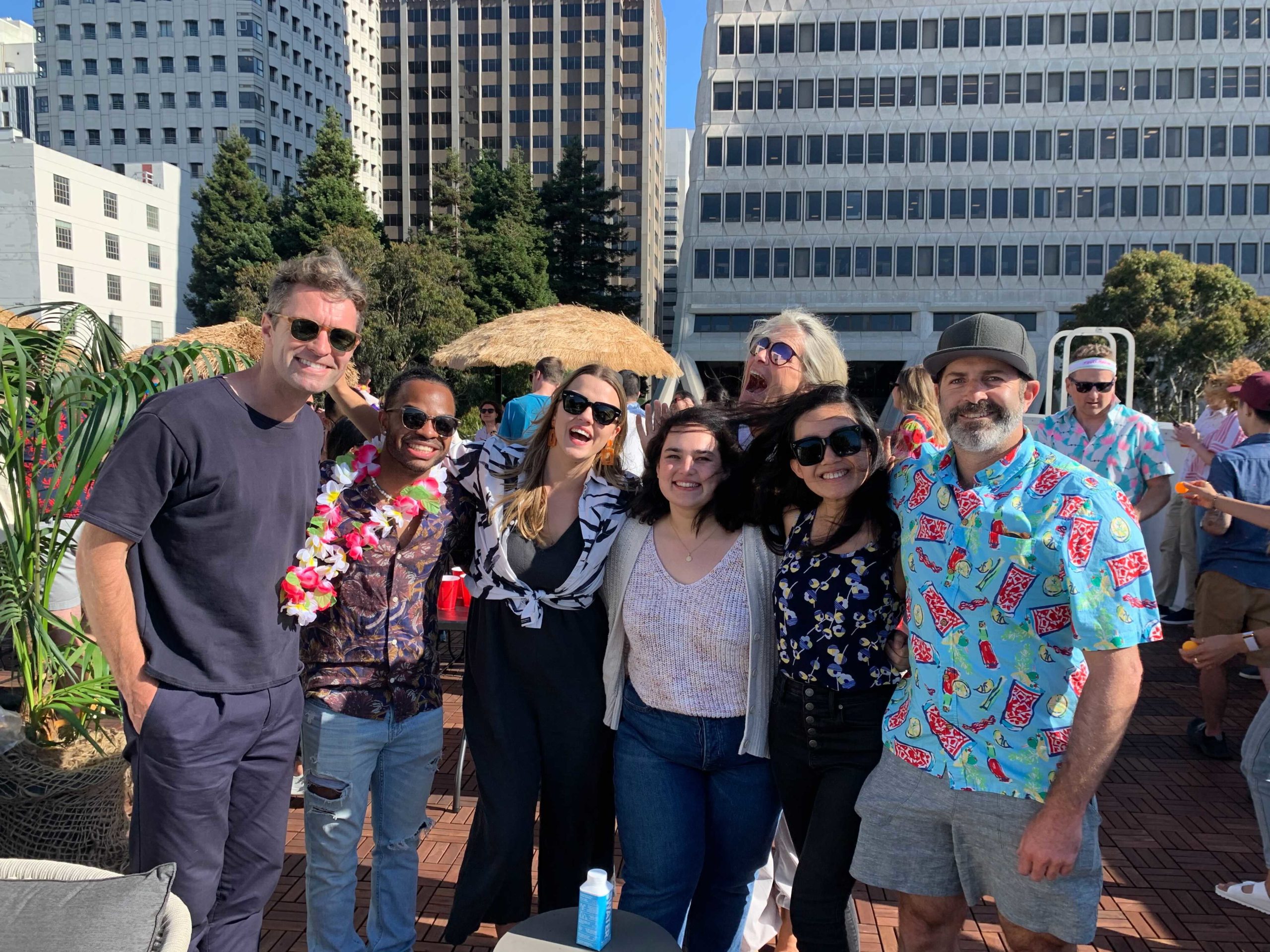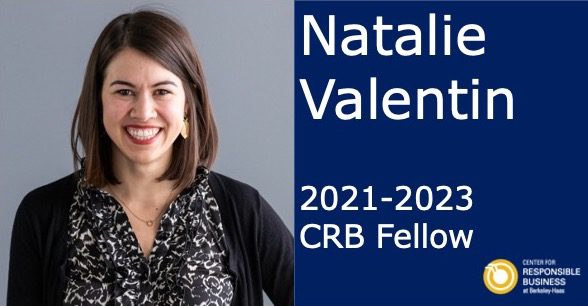Socially Responsible Investing: The Next “Sweet Employee Perk?”

By Samantha Penabad, CRB Student Advisory Board & MBA ’18 Candidate
Moving from Washington, D.C. – the mecca of dreary government buildings – to the Bay Area, it’s hard not to notice all the enviable perks businesses highlight to potential new employees: free lunch, unlimited vacation, cool workspaces, and a myriad of other millennial-friendly extras. But there’s one missing – it falls somewhere in between the old-school retirement benefits and new-school workday perks: socially responsible investing options.
For most large companies, providing 401k options for employees is a standard process – maybe some period of vesting and then some percentage of matching – incentivizing employees to save for their future, while also providing additional compensation. But in 2015, government regulators changed the game when they approved the use of Environmental, Social and Governance issues (commonly referred to as “ESG”) by ERISA plan fiduciaries (as in – the people at your company that select your retirement investment options). In fact, the Department of Labor released a statement where it, ““acknowledges that environmental, social, and governance factors may have a direct relationship to the economic and financial value of an investment,” a significant turnaround from previous language which discouraged consideration of ESG factors. This new guidance opens the door for companies to begin to offer retirement investment options that align with employees values as well as their financial goals. These could include Socially Responsible Investment Funds, which are investment vehicles that actively view a company’s performance on ESG metrics, and either avoid companies that perform poorly in this area, and focus on companies that perform well – all without influencing the financial performance of the vehicle.
Why should companies care? Here are five reasons your investment committee should add socially responsible investment options to its benefits package, and in doing so, create the next big “employee perk:
- Availability of ESG-screen funds can enable individuals to make better decisions about their investment options. We already know that investing in companies with high ESG ratings does not detract from our returns – if anything, study after study show that companies with positive ESG is correlated with corporate financial performance. This one from Harvard and Calvert shows how ESG data may be able to help portfolio returns without adding additional risk. Providing these options for employees, means providing them with better, more holistic ways to save for retirement.
- If your company is serious about improving diversity, and retaining millennial talent, then it needs to prepare for a workforce that has a different outlook on its investment strategy.Women, minorities, and millennials are more likely to consider ESG as an important factor in their investment strategy (see this article from Calvert). Simply put, companies need to provide the type of investment vehicles that the “workforce of the future” will demand. As these employees look for companies that match their values, they will also look for companies that allow them to invest their earnings in products that match their values.
- Companies have a unique role to play in educating new investors. The more they signal that ESG data matters, the more ubiquitous it becomes. For many millennials, their 401k selection is the first time they independently select products and invest in public markets. How many parents have received phone calls from their children asking – “what’s a Roth?” Right now, companies typically provide employees with an overview of the quarterly returns, relative risk profile, etc. of each fund offered, enabling them to select the best investment vehicle for their retirement savings. What if companies also provided a column with data on the ESG score of the fund? (In March, MorningStar, introduced the first sustainability rating for 20,000 funds – making the data accessible to individual investors.) As companies provide data to their employees to help them select portfolios that match their preferences, they have a unique opportunity to open the eyes of their employees to additional sources of data, not only as it relates to historical financial returns, but the sustainability performance as well.
- You’re only half walking-the-walk. As a company, chances are you’ve made some commitment to the community you work in – either through your environmental standards, community service activities, or hiring practices. Perhaps some of these efforts are even presented in your annual report, or mentioned in quarterly investor meetings. But even if your operations are sustainable, and your business practices just, if your company is managing its pension funds without a similar lens to ESG, what really is the point? Your company may expect outside investors to understand the materiality of its ESG efforts, and fault these investors for emphasizing only short-term gains over long-term value and sustainability – isn’t it time to look internally and align your company’s own investing perspective with the perspective you hope investors approach your business with?
- Together we have way more power to change the system than individually.If companies incorporate ESG into their investment making decisions, and if they provides more options for highly rated ESG funds, we can truly move needle on responsible business. When companies, which channel billions of dollars in employee investments and matching contributions, demand change, the market is much surer to listen. That’s building a movement.
 Samantha Penabad is a first year MBA student at the UC Berkeley Haas School of Business where she focuses on sustainable finance and impact investing. Prior to her MBA, Samantha worked in strategy consulting with a focus on emerging markets. She is a member of the Haas Impact Investing Network and the Haas Socially Responsible Investment Fund, and is currently interning at Tideline, a strategy consultancy that provides tailored advice to foundations, asset managers and family offices developing impact investing strategies, products, and solutions.
Samantha Penabad is a first year MBA student at the UC Berkeley Haas School of Business where she focuses on sustainable finance and impact investing. Prior to her MBA, Samantha worked in strategy consulting with a focus on emerging markets. She is a member of the Haas Impact Investing Network and the Haas Socially Responsible Investment Fund, and is currently interning at Tideline, a strategy consultancy that provides tailored advice to foundations, asset managers and family offices developing impact investing strategies, products, and solutions.


